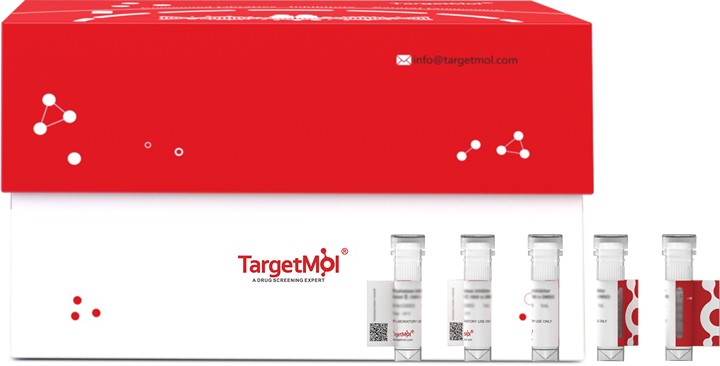- Remove All
 Your shopping cart is currently empty
Your shopping cart is currently empty
RAC1 Protein, Human, Recombinant (GST)
RAC1 is a GTPase that belongs to the RAS superfamily of small GTP-binding proteins. Members of this superfamily appear to regulate a diverse array of cellular events, including the control of cell growth, cytoskeletal reorganization, and the activation of protein kinases. Two transcript variants encoding different isoforms have been found for RAC1 gene. RAC1 is a plasma membrane-associated small GTPase which cycles between active GTP-bound and inactive GDP-bound states. In its active state, binds to a variety of effector proteins to regulate cellular responses such as secretory processes, phagocytosis of apoptotic cells, epithelial cell polarization and growth-factor induced formation of membrane ruffles. RAC1 p21/rho GDI heterodimer is the active component of the cytosolic factor sigma 1, which is involved in stimulation of the NADPH oxidase activity in macrophage. RAC1 is essential for the SPATA13-mediated regulation of cell migration and adhesion assembly and disassembly. RAC1's isoform B has an accelerated GEF-independent GDP/GTP exchange and an impaired GTP hydrolysis, which is restored partially by GTPase-activating proteins. It is able to bind to the GTPase-binding domain of PAK but not full-length PAK in a GTP-dependent manner, suggesting that the insertion does not completely abolish effector interaction. Stat3 is an important transcription factor that regulates both proinflammatory and anti-apoptotic pathways in the heart. It forms a multiprotein complex with RAC1 and PKC in an H/R-dependent manner by expression of constitutively active Rac1 mutant protein, and by RNA silencing of RAC1. Selective inhibition of PKC with calphostin C produces a marked suppression of Stat3 S727 phosphorylation. The association of Stat3 with Rax1 occurs predominantly at the cell membrane, but also inside the nucleus, and occurs through the binding of the coiled-coil domain of Stat3 to the 54 NH(2)-terminal residues of RAC1. Transfection with a peptide comprising the NH(2)-terminal 17 amino acid residues of RAC1-dependent signaling pathways resulting in a physical association between Rac1 and Stat3 and the formation of a novel multiprotein complex with PKC.

RAC1 Protein, Human, Recombinant (GST)
| Pack Size | Price | Availability | Quantity |
|---|---|---|---|
| 50 μg | $600 | 7-10 days |
Product Introduction
| Description | RAC1 is a GTPase that belongs to the RAS superfamily of small GTP-binding proteins. Members of this superfamily appear to regulate a diverse array of cellular events, including the control of cell growth, cytoskeletal reorganization, and the activation of protein kinases. Two transcript variants encoding different isoforms have been found for RAC1 gene. RAC1 is a plasma membrane-associated small GTPase which cycles between active GTP-bound and inactive GDP-bound states. In its active state, binds to a variety of effector proteins to regulate cellular responses such as secretory processes, phagocytosis of apoptotic cells, epithelial cell polarization and growth-factor induced formation of membrane ruffles. RAC1 p21/rho GDI heterodimer is the active component of the cytosolic factor sigma 1, which is involved in stimulation of the NADPH oxidase activity in macrophage. RAC1 is essential for the SPATA13-mediated regulation of cell migration and adhesion assembly and disassembly. RAC1's isoform B has an accelerated GEF-independent GDP/GTP exchange and an impaired GTP hydrolysis, which is restored partially by GTPase-activating proteins. It is able to bind to the GTPase-binding domain of PAK but not full-length PAK in a GTP-dependent manner, suggesting that the insertion does not completely abolish effector interaction. Stat3 is an important transcription factor that regulates both proinflammatory and anti-apoptotic pathways in the heart. It forms a multiprotein complex with RAC1 and PKC in an H/R-dependent manner by expression of constitutively active Rac1 mutant protein, and by RNA silencing of RAC1. Selective inhibition of PKC with calphostin C produces a marked suppression of Stat3 S727 phosphorylation. The association of Stat3 with Rax1 occurs predominantly at the cell membrane, but also inside the nucleus, and occurs through the binding of the coiled-coil domain of Stat3 to the 54 NH(2)-terminal residues of RAC1. Transfection with a peptide comprising the NH(2)-terminal 17 amino acid residues of RAC1-dependent signaling pathways resulting in a physical association between Rac1 and Stat3 and the formation of a novel multiprotein complex with PKC. |
| Alias | TC-25, ras-related C3 botulinum toxin substrate 1 (rho family, small GTP binding protein Rac1), Rac-1, p21-Rac1, MIG5 |
| Molecular Weight | 47 kDa (predicted); 44 kDa (reducing conditions) |
| Storage | Shipping with blue ice. |
Sci Citations
Calculator
In Vivo Formulation Calculator (Clear solution)
Dose Conversion
Tech Support
Keywords

Copyright © 2015-2025 TargetMol Chemicals Inc. All Rights Reserved.




